Some of these tokens don’t come out of the ground in that great of shape, depending on what they are made of, how long they’ve been in the ground, and what type of ground they were buried under.
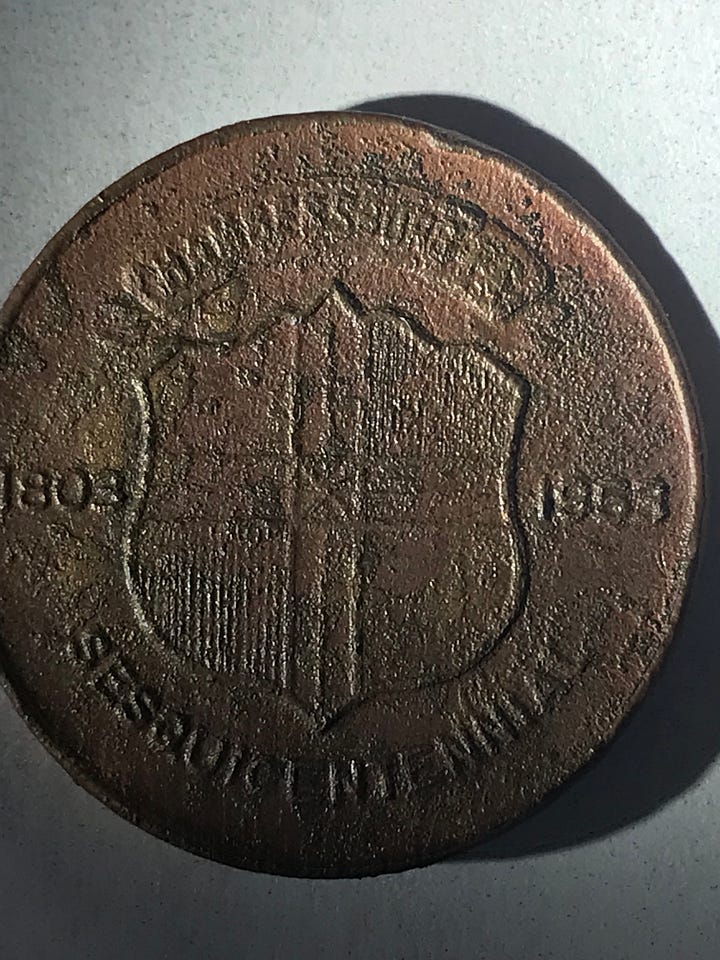
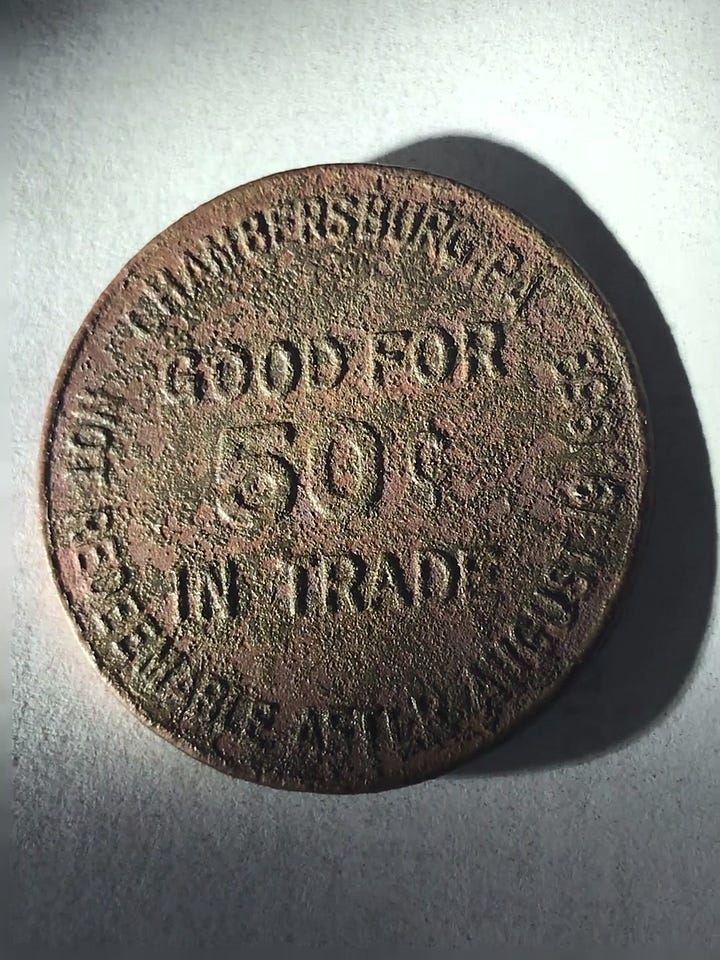
The first token on display today is a Chambersburg Sesquicentennial (150-year anniversary, 1803-1953). Benjamin Chambers founded Chambersburg in 1730 when watermills were built at the Conococheague and Falling Spring Creeks. However, it wasn’t until 1803 that the municipal government was established through a state-granted charter as a borough. The tokens were issued for use from August 16-22, 1953, and were valid for discounts at various stores in town, including Olympia Candy Kitchen, Lyon’s Clothing Store, and Ray Hays and Sons.
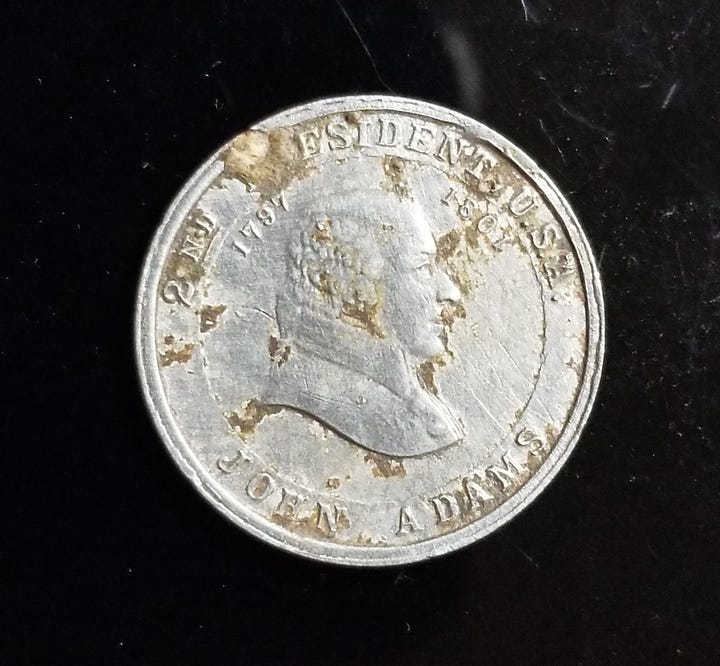
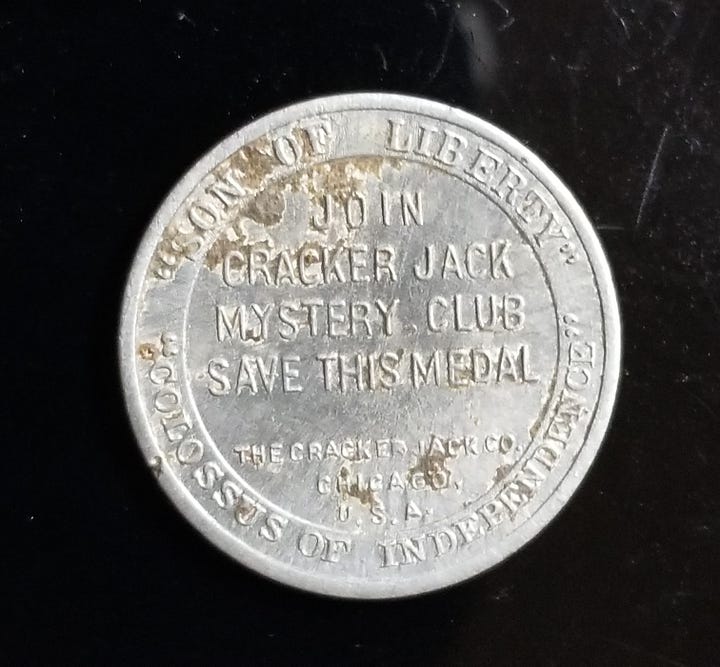
This next token was a “Cracker Jack prize.” Cracker Jack was considered the original junk food by some, and the recipe dates back to 1871 when a German immigrant, Frederick William Rueckheim, began selling a popcorn snack on a Chicago street corner. Customers weren’t fond of the sticky caramel coating, so between 1871 and 1893 the recipe was adjusted and the new popcorn made its nationwide debut at Chicago’s Columbian Exposition in 1893 (See my previous post HERE about a commemorative ring from this Exposition). The Cracker Jack name was registered in 1896 and in 1912 small toys or “prizes” were added to each box, making them even more attractive to children. Between 1933-1936, Presidential coins were substituted for the toys, and 31 different presidential profiles were offered for collection.
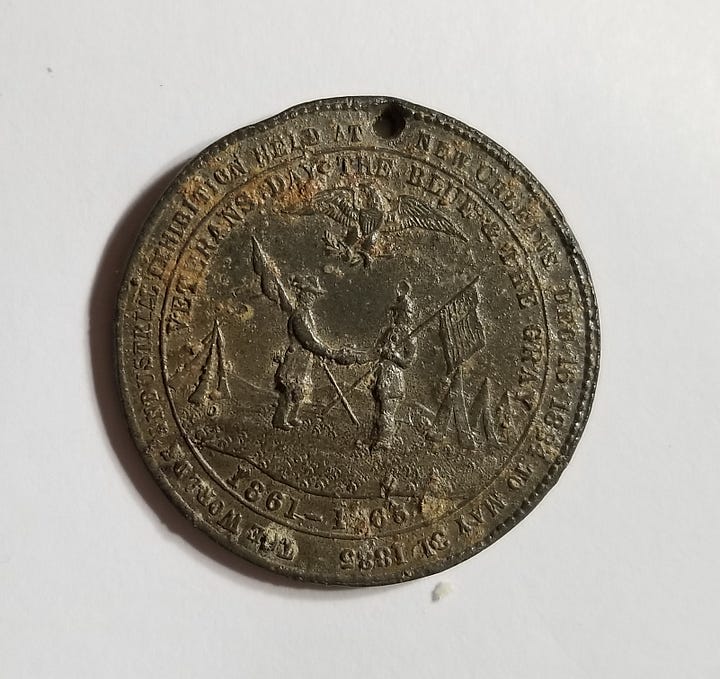
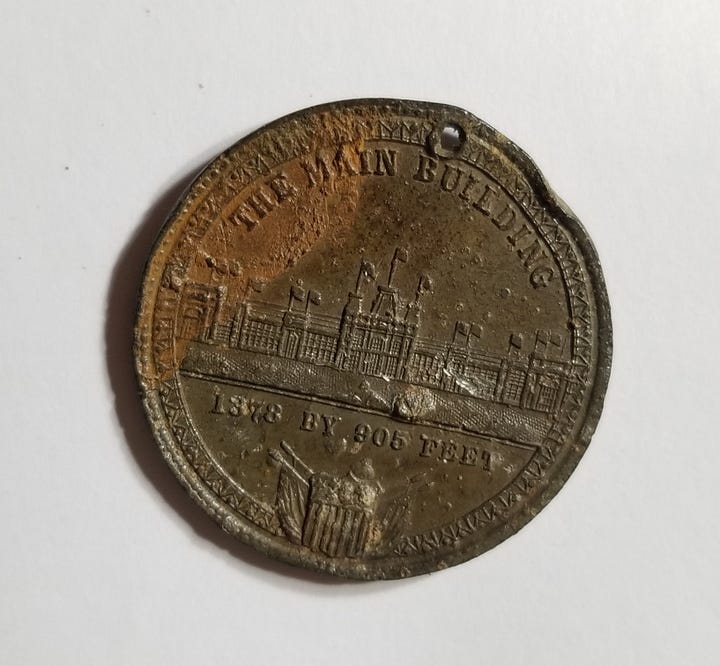
Third on the list today is a New Orleans Exposition token. This World’s Fair, also known as the World’s Industrial and Cotton Centennial Exposition, was held from December 16, 1884 through May 31, 1885, in part to celebrate the 100th anniversary of shipping cotton bales from New Orleans to England, and partly because, face it, back then people just like to have World’s Fairs. The cost for admission was fifty cents for adults and twenty-five cents for children (or fifteen cents if they were enrolled in school). An interesting fact about this event is that the opening, originally scheduled for December 1, 1884, was delayed because the newly-invented electric lights failed to perform to expectation.
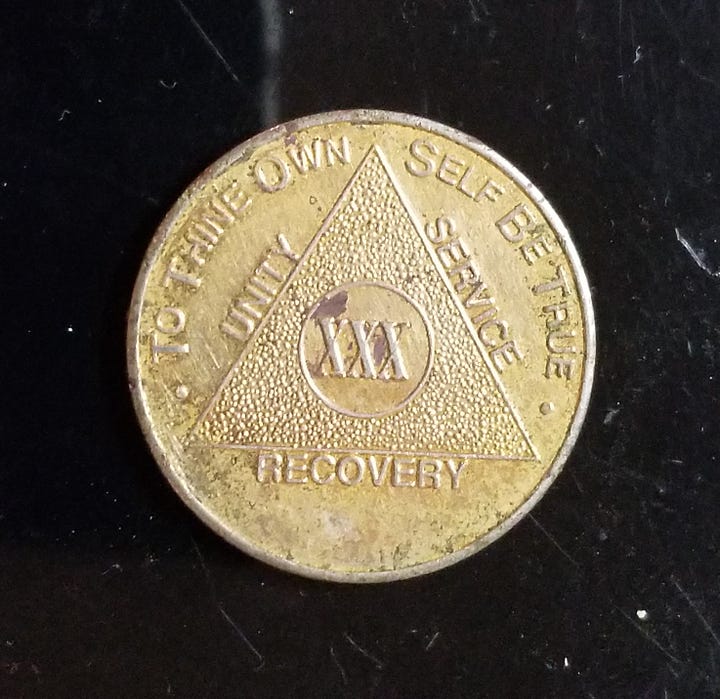
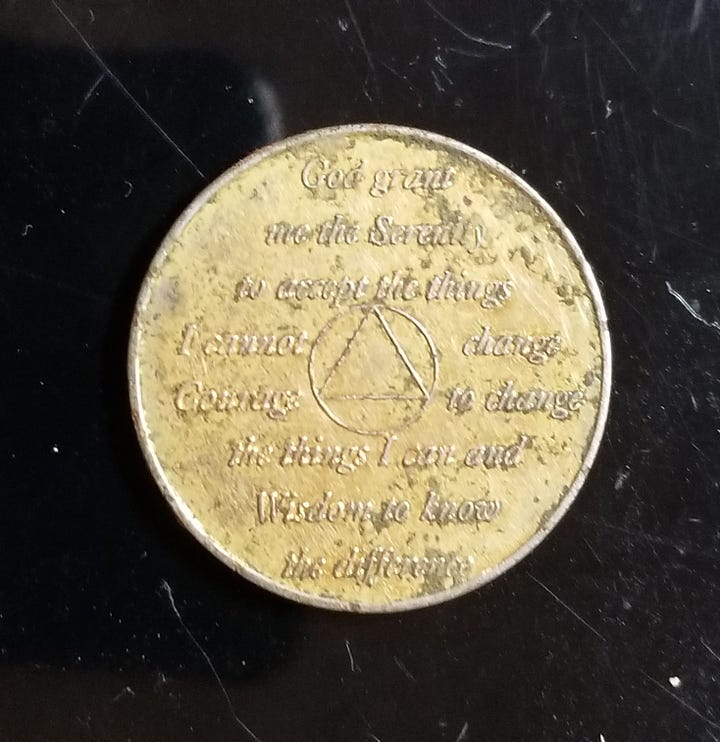
Alcoholics Anonymous issued tokens, called “sobriety chips” to represent the amount of time the member has been sober. In the late 1940’s issuance of these tokens came into use and while they seem to be a pretty minor memento, they represent a major milestone in the lives of those who fought the good fight. This particular example is a 30-year token, but probably isn’t from the 1940’s, and I really hope the recipient wasn’t too broken-hearted at losing it and they didn’t dispose of it because they fell off the wagon.
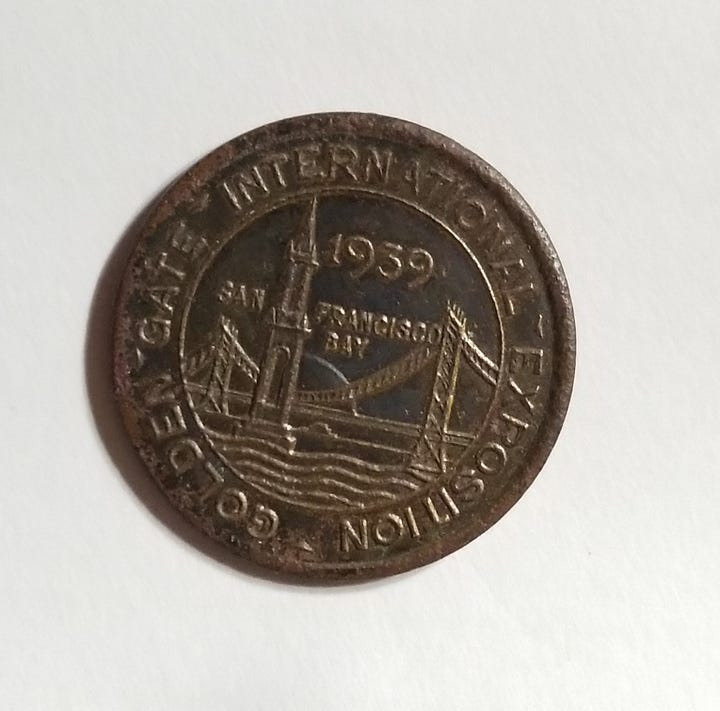
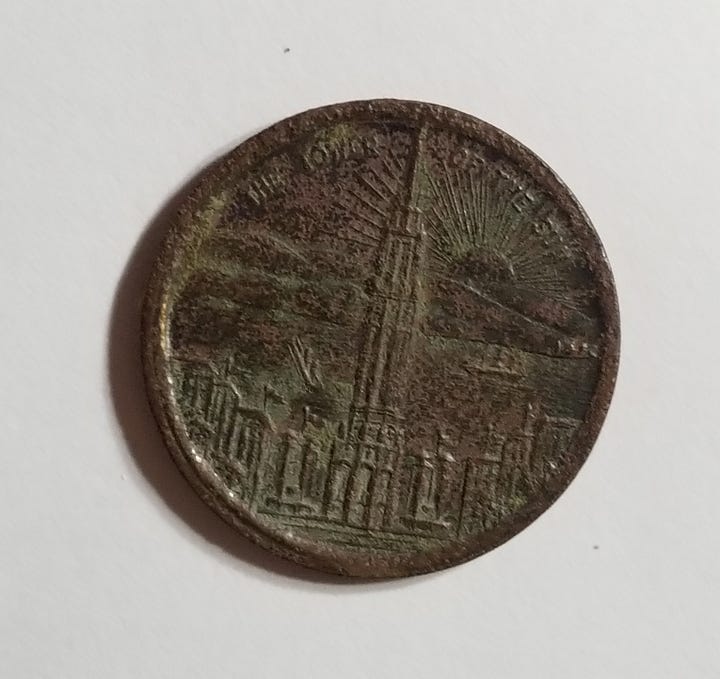
The fifth token (and final for this installment) is a Golden Gate International Exposition commemorative token from 1939. Original plans called for the Exposition to open on February 18,1939, and close on December 2, 1939, however the Fair was losing money, so they closed early on October 29. A reorganization attempted to reopen for 1940, but that effort was abandoned in December 1939. A second attempt was more successful, and a limited reopening occurred between May 25 and September 29, 1940.
The theme of the Exposition was “Pageant of the Pacific,” and the reverse of the token shows an etching of “The Tower of the Sun,” which represented Pacifica, goddess of the Pacific.




Great post! Where did you find the Chbg Sesqui token?